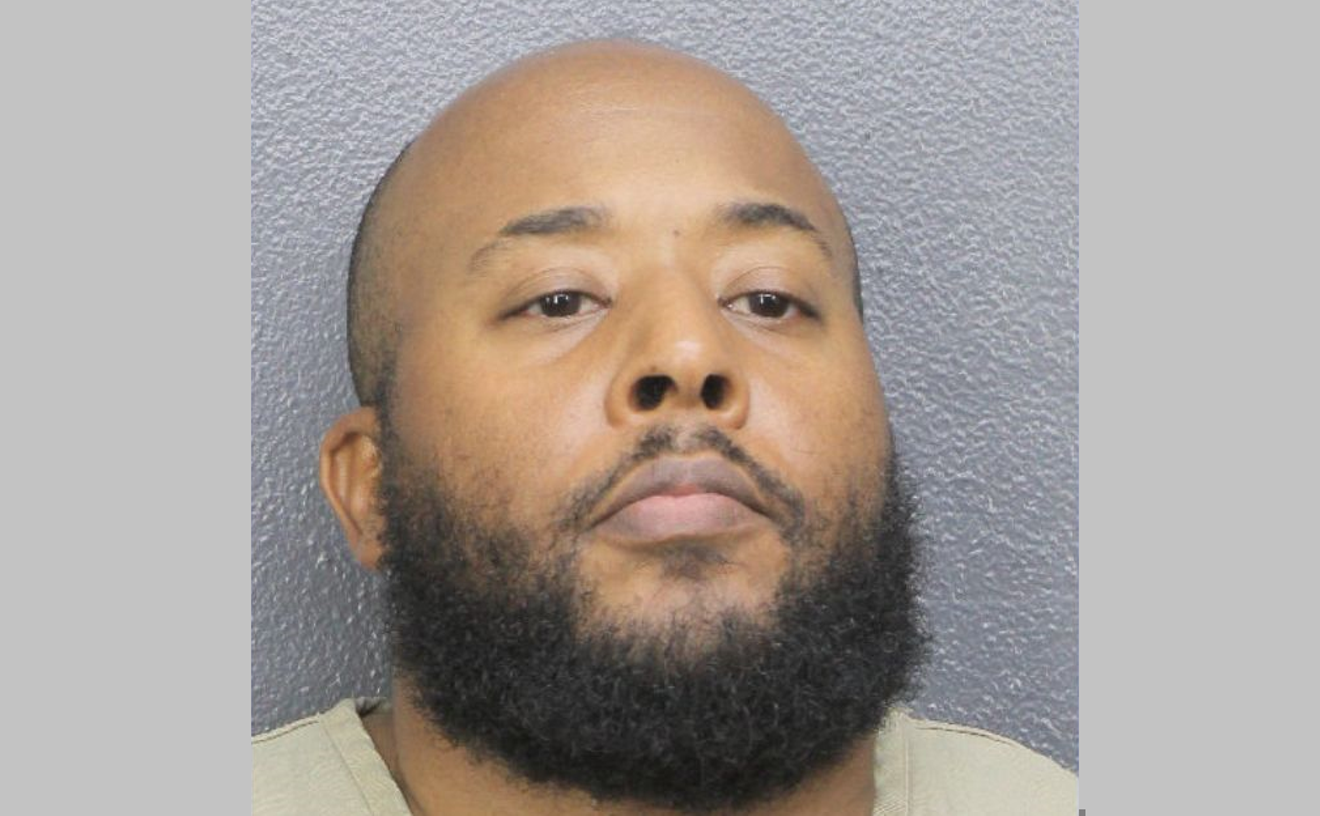Bueno earned her GED and started her career as a writer behind bars. But a lack of higher education options in Florida prisons limits her opportunities to earn a degree before she's released in 2029.
"I would love to be able to go to college," she says. "Many people face insurmountable economic and social challenges when they're released, but a college degree would solve a lot of those problems."
Aspiring students like Bueno were thrilled when federal financial aid for low-income students returned with a pilot program launched in 2015 under the Obama administration that restored Pell Grants for some incarcerated students for the first time since 1994.
Eligibility for Pell Grants expanded to everyone in prison last summer. But there are currently no new prison education programs inside the Florida Department of Corrections, whose budget of $3.3 billion makes it the state's largest public agency and the third-largest prison system in the United States.
Higher education opportunities in Florida's prisons are hard to come by. Today, only about 326 students are enrolled in college programs in Florida prisons, according to data provided by colleges. That's only a tiny fraction of the more than 80,000 people incarcerated in the state. The Florida Department of Corrections oversees 128 correctional facilities, only ten of which offer college programs. (One of those is a re-entry center, another is a privately run prison.)
Despite multiple requests, the Florida Department of Corrections did not comment on whether it has plans to seek college applications to expand its higher education offerings, nor did it provide data on total enrollment across the system.
Bueno says the women at her prison were excited by the possibility of enrolling in school, but so far there are no signs that college is coming to their institution anytime soon. Although Miami Dade College already runs programming at a men's facility in Miami, the women's prison is not an approved instructional site for Pell-eligible programs. Colleges must seek approval from the U.S. Department of Education for every facility where they would like to teach if they use Pell Grants.
"It seems hypocritical to live in a place that is designed to change behavior but not be able to get an education," Bueno says. "People may feel like it's a waste of time to let prisoners go to college, but educational programs have a positive effect on an individual, and that continues when they return to their community."
A Lack of Opportunity, Not Desire
Incarcerated individuals who participate in postsecondary education are almost half as likely to return to prison as those who do not; moreover, prisons with college programs tend to have less violence and safer conditions for everybody, according to the Vera Institute, an independent research and policy organization that focuses on criminal justice.And studies show that many incarcerated people would enroll in college if it was offered. Nearly 70 percent of incarcerated people say they want to continue their education after high school, according to a 2019 report by New America, a liberal public policy think tank.
"I've been trying to get a transfer to one of the few Florida prisons that have colleges," says James Stein, an incarcerated resident at Dade Correctional Institution, the men's prison in Homestead. "But even if I make it there, the prison doesn't want me to be in education because I'm serving a life sentence."
Because Stein is serving a life sentence without parole, he is ineligible to attend college inside; in order for an incarcerated person to participate in most programs, the corrections department requires that they have less than ten years remaining on their sentence.
The lack of education in Florida prisons extends beyond college. A 2019 investigation by the Sarasota Herald-Tribune found that one in three people incarcerated in Florida reads below a sixth-grade level and two in three lack a high school diploma or GED — the main requirement for participation in college programs.
Currently, about 170 incarcerated students attend in-person, credit-bearing college classes through Miami Dade College, Florida Gateway College, and Palm Beach State College. Another 170 use state-issued electronic tablets to take classes through Ashland University, a controversial private Christian college based in Ohio. All told, about 0.5 percent of people incarcerated in Florida Department of Corrections facilities are enrolled in college.All told, about 0.5 percent of people incarcerated in Florida Department of Corrections facilities are enrolled in college.
tweet this
By comparison, Texas has about 1.3 percent of its total prison population enrolled in higher education, according to the state corrections agency. A spokesperson from the California Department of Corrections and Rehabilitation says 13.5 percent of California's incarcerated population are students enrolled in higher education. These are the only two states that have larger prison populations than Florida. In Maine, which has the nation's smallest incarcerated population, the state corrections department reports that 9.8 percent of residents were enrolled in higher education as of 2023.
None of the 12 institutions in Florida's state university system currently offer courses for credit to incarcerated students. The University of Central Florida in Orlando has taught more than 50 courses to over 750 incarcerated men and women since 2017, but students don't earn college credits they can apply toward a degree, says Keri Watson, the professor who directs the prison program. The program does not receive federal financial aid.
Without more state institutions willing to teach inside, some faculty worry there will be only an expansion of tablet-based education, which they find to be a subpar form of instruction.
The Challenges of Operating Inside
Only three of Florida's 28 state colleges — Florida's version of community college — offer degree-granting programs inside. Creating a new college program inside is difficult and expensive, and community colleges often have limited resources.Challenges include staff shortages, lack of classroom space, slow adoption of technology, security lockdowns, and enrollment restrictions due to sentences. Individual students also face challenges because of defaulted student loans or state residency issues that preclude eligibility for in-state tuition.
Making things harder, in order to operate inside correctional facilities, colleges must redesign how they do things — including financial aid processes, admissions applications, and the management of classrooms that often aren't equipped with internet access. Research also shows there are often costs not covered by Pell Grants, which means prison education programs must sometimes supplement their budgets. Recruiting teachers is another huge challenge; the corrections department requires anyone who goes inside to complete a mandatory 40-hour training on prison policy.
While colleges like Miami Dade pay faculty for instruction time, the weeklong prison training must be done on the teacher's personal time, which discourages potential faculty members, says Samantha Carlo, co-director of Miami Dade's program at Everglades Correctional Institution in Miami.
Everglades benefits from its proximity to the city and Miami Dade College, but many Florida prisons are located in rural areas far from higher-education institutions. Instructors are not usually compensated for their drive time or gas.
In addition, as initiatives related to diversity, equity, and inclusion come under attack in Florida, there may not be much political will to create new prison education programs.
Stephanie Etter, vice provost of academic services and learning resources for Broward College in Fort Lauderdale, writes in an email that her institution is "focused on other college priorities and [is] not actively engaged in planning a prison education program.""When you give people a way to get an education inside, it's a better outcome for when they go home."
tweet this
For now, students are limited to existing in-person programs. Miami Dade currently enrolls 66 students, according to Carlo.
Since 2017, Florida Gateway has graduated 155 students from its program at Columbia Correctional Institution, west of Jacksonville. There are 60 continuing students enrolled for the spring term. So far, the college has no plans to expand the program, according to an email from the college's communications department.
Palm Beach has provided courses since the fall of 2022. This summer, 30 students are scheduled to complete associate degrees in the college's landscape and horticulture management and hospitality and tourism management programs.
Becky A. Mercer, associate dean at Palm Beach, writes in an email that the college has no firm plans to teach in more prisons, but "discussions about expanding the program are underway."
Christian-oriented Ashland University offers its private, online education program at six facilities in the state. Jim Cox, assistant vice president of correctional education, writes in an email that the institution is currently waiting for approval from the Department of Corrections and the U.S. Department of Education to continue its Pell-funded programs.
Former Republican state Sen. Jeff Brandes, who founded the Florida Policy Project think tank after leaving office in 2022, says all options should be on the table when it comes to expanding education in prison. "The goal for prisons is to improve public safety," he points out. "When you give people a way to get an education inside, it's a better outcome for when they go home."
The responsibility rests with the corrections department as well as the colleges and lawmakers, Brandes asserts.
"You can't expect the universities to do it all, and state legislators haven't made higher ed in prison a priority because they ignore what goes on inside," says Brandes, who sponsored several prison education bills during his time in office. "I go to some prisons where there's 1,500 residents and no education programming....That's [because of a] lack of funding and will from the Florida Department of Corrections."
This article was supported by a reporting fellowship from the Education Writers Association and published in partnership with Open Campus, a nonprofit newsroom dedicated to investigating and elevating higher education. The story will also be distributed via College Inside, an Open Campus newsletter focused on the future of postsecondary education in prison.








